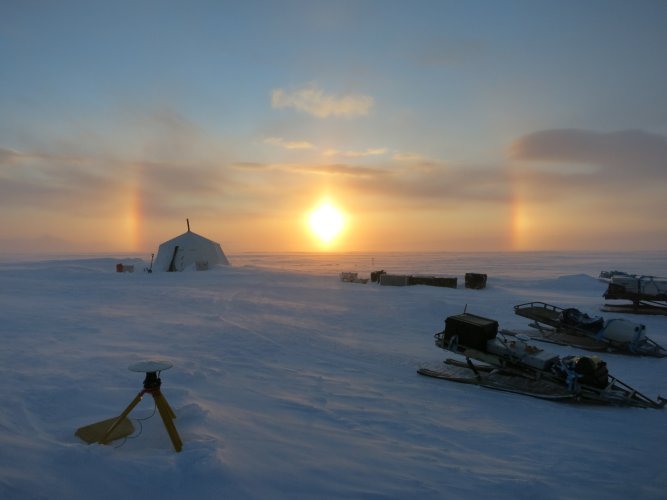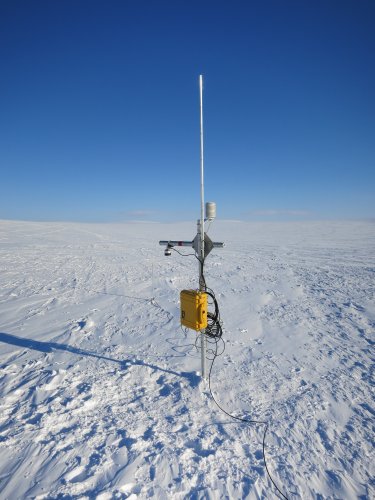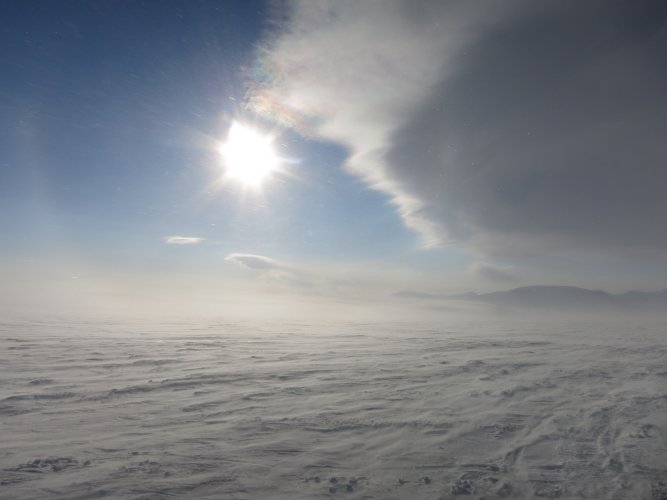An access project field log
By Ward van Pelt
Two years later than planned, we were finally able to travel to Svalbard for fieldwork on the Lomonosovfonna ice cap. After a few days of preparation in Longyearbyen, we went in the field with five people (four from Uppsala University, one from Utrecht University) on 31 March 2022. We travelled with scooters and sleds and put up a camp at 1200 m a.s.l. on the ice cap. That was our home until we returned to Longyearbyen on 7 April. In addition to regular long-term monitoring of glacier mass balance, ice dynamics and meteorological conditions, a major aim for this year’s campaign was to set up a measuring station high up on the ice cap to monitor a so-called perennial firn aquifer, a large water body that has formed in the deep multi-year snow (firn) on the ice cap.

Thanks to the Access Programme funding from SIOS, we set up a monitoring station that currently measures water pressure in two boreholes. This gives insight in water table fluctuations with hourly intervals, which is important for assessing water flow rates in the aquifer, as well as timing and amounts of sources (percolating melt water) and sinks (runoff into the glacier). The installed station further measures snow accumulation, surface melt, air temperature as well as subsurface temperature down to 12 meters below the surface. With these data, we have a complete set of information to analyse intra-annual fluctuations of the aquifer and link those to changing surface conditions and runoff.

In addition to this, a radar system, pulled behind a scooter was used to measure depth of the water table along tracks on the surface. The followed tracks were the same as in earlier years, giving important insight in potential trends in the water table depth, e.g. resulting from increased melt water input. Finally, in collaboration with colleagues from UNIS, we collected numerous samples of water, which are currently being analysed to determine the microbiological conditions in the aquifer system. Firn aquifer ecology is at present a major unknown and these observations may help better assess the impact of discharge of organic matter from the firn aquifer on downstream ecosystems and to study its relevance for the carbon cycle.




























